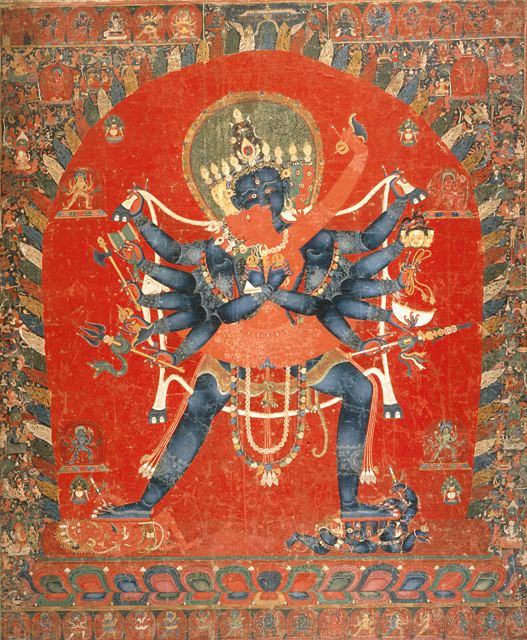 | ||
The Cakrasaṃvara Tantra (Sanskrit: चक्रसंवर तन्त्र) or Khorlo Déchok (Tibetan: འཁོར་ལོ་བདེ་མཆོག, Wylie: 'khor lo bde mchog) is considered to be of the mother class of the Anuttarayoga Tantra in Vajrayana Buddhism.
Contents
Deity and mandala
The central deity of the mandala, Saṃvara, is a form of Heruka, one of the principal yidam or meditational deities of the Sarma schools of Tibetan Buddhism.
Saṃvara is typically depicted with a blue-coloured body, four faces, and twelve arms, and embracing his consort, the wisdom dakini Vajravārāhī in Yab-Yum. Other forms of the deity are also known with varying numbers of limbs.
Saṃvara and Vajravārāhī are not to be thought of as two different entities, as an ordinary husband and wife are two different people; in reality, their divine embrace is a metaphor for the union of great bliss and emptiness, which are one and the same essence.
In Western meditation texts his name is often translated to mean "Highest Bliss". Meditation on Cakrasaṃvara is an advanced practice transmitted by one's lama, and binds the mind of the meditator to enlightenment itself.
Influence of Saivism
The Samvara texts adopted the pitha list from the Saiva text Tantrasadbhava, introducing a copying error where a deity was mistaken for a place.
